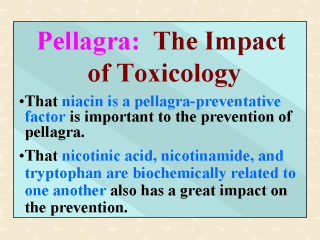 |
Black tongue is
the disease described by American veterinarians as having syndrome and condition
comparable to human pellagra. Although Elvehjem et al. were the first to identify
the curative factors for black tongue in dogs, they were not the first to isolate these
factors. Nicotinamide is a component of coenzyme II. It was first isolated in 1934 by Otto
Warburg and Walter Christian in Germany (Roe, 1973), during the course of their studying
the physiological significance of vitamins. Nicotinic acid, on the other hand, was first
isolated from rice polishings in 1911 by Casimir Funk in London (Williams, 1973). Niacin
is the official vitamin name for nicotinic acid, which is easily converted to its amide
form, nicotinamide. When subsequent treatments of pellagrins with nicotinamide or
nicotinic acid were seen successful, these compounds were firmly confirmed as the
pellagra-preventive factor. Biochemical understanding about niacin being the
pellagra-preventive factor has a great impact on disease prevention. For example, milk has
the ability to prevent pellagra although it is low in niacin. As pointed out by Williams
(1973), milk prevents and cures pellagra because it is high in the essential amino acid
tryptophan. As mentioned earlier (Slide 6), tryptophan is a precursor of niacin, a fact
discovered in 1945 by Willard Krehlís group at the University of Wisconsin (Krehl et
al., 1945a, 1945b). |
